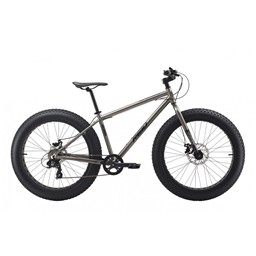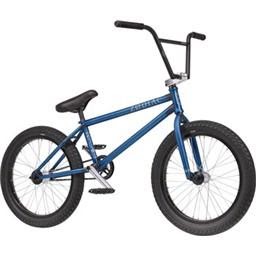


A bicycle ideal for fitness and long distance touring is a hybrid bicycle. Hybrid bicycles are basically a combination of a road bike (700c road bicycle wheels) and a mountain bike (flat handlebars). These bikes are more towards performance and offer an efficient riding position.

Designed for performance and speed, road bikes are light and meant to be ridden on paved roads. The geometry of these bikes offers a short wheelbase, low bottom bracket, and the steep head tube that lets the rider to react instantly. The bike also offers a low centre of gravity which is suitable for turning.

As the name suggests, this type of cycle comes with fat tyres which are oversized. Such types of bicycles are meant to be ridden on snow, sand, dirt tracks and on rocky terrains. The wide tires are what make it possible to offer the rider more traction and cushioning. Also, the versatile bikes come with wide tires that make carrying loads much easier.

If you are looking to perform stunts on a bicycle, a BMX bicycle is what you should be looking at. These types of cycles come with small frames and wheels. They also have a flat handlebar and no gears. In spite of their small size, the bikes are strong and can handle the weight of an average adult while performing the stunts.

Dislike commuting by public transport? Get yourself a foldable bicycle. The bicycles are designed specifically for commuting. The bikes are light and can be easily folded into a compact form (size of a suitcase) that can be carried around easily on public buses or trains.

If you are looking for a bicycle that can be ridden with ease on city and off-road, mountain bikes are what you should be looking at. As the bicycle comes with wide tyres that offer extra traction and an upright frame offering higher clearance, it is easy to ride on a variety of surfaces, including gravel, dirt, rock and sand.
Credits- https://abhishektarfe.medium.com/13-different-type-of-cycles-in-india-a-complete-list-90d13918a80a
Credits- https://www.steadcycles.com.au/10-itips-for-taking-care-of-your-bike/
Many wrongly believe that cycling can make you more susceptible to developing piles. In fact, cycling is only indirectly linked to piles; it can only be a contributory factor in further aggravating an existing haemorrhoid condition. When sitting on a saddle, blood flow to the anal region is reduced, more pressure is placed on the rectal area and friction is created. Particularly if sitting on a saddle for a prolonged period, cycling can therefore make the haemorrhoids more uncomfortable and inflamed. The exact cause of haemorrhoids is unknown but they are associated with increased pressure in and around your anus. Pressure can be caused by constipation, pregnancy, regular heavy lifting and obesity. Age is also a factor; as you get older, your body’s supporting tissues get weaker, increasing your risk of haemorrhoids.
Haemorrhoids do not mean that you have to reduce activity. Regular exercise can promote regular bowel movements, reducing the likelihood of contracting haemorrhoids or making existing haemorrhoids worse. It can also increase blood flow therefore reducing inflammation. Exercise helps you lose weight; this is key, given that obesity can increase your risk of suffering from haemorrhoids. However, there are certain things you can do to enable you to continue enjoying cycling if you have haemorrhoids.
Here are our ‘Top Four Tips':
Credits- https://bicycleuniverse.com/cycling-bad-hemorrhoids/
